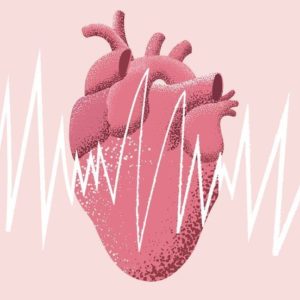4 min|Integrative
How to Heal A Leaky Gut
WellnessHow to Naturally Heal Your Gut
Now that we've covered the why & who of a leaky gut, you are probably wondering how to heal your gut. Fret not - one of the Naturopathic principles states that the body has an inherent ability to heal itself. Our treatments aim to create an environment in which the body can heal, provide it with the nutrients it needs to do so, and remove any obstacles to cure. A basic gut healing protocol follows the "4 Rs" of healing:
1. Remove
In this step we aim to remove any offending agents that may be affecting your gut health. This includes food sensitivities and allergies, gut infections, as well as common gut irritants such as caffeine, alcohol and processed foods. This is an individual process that may involve food sensitivity testing, food allergy testing, or our Biomeridian system, a noninvasive test that identifies foods that are inflammatory to your body. Depending on the results, we may recommend eliminating foods from your diet for a period of time or indefinitely, depending on the severity of your reaction to these foods. We may also recommend herbs, anti-fungal supplements, or medications if we suspect that you have a gut infection.
2. Repair
We incorporate foods and supplements to directly heal the damaged gut lining. Glutamine, an amino acid, is a fuel source for the cells that line the gut; additionally it aids in protecting the lining and influences regeneration of these cells. It can be taken as a supplement while we also encourage the use of foods rich in glutamine such as bone broth and cabbage juice. Herbs, such as slippery elm and licorice (deglycyrrhizinated), aloe vera, and althea can soothe and decrease inflammation in the gut lining.
3. Reinoculate
Probiotics are used to help restore a healthy gut bacteria population within your digestive tract. Often, healthy gut bacteria have been depleted by antibiotics or by an overgrowth of unhealthy bacteria that feed on sugar and other components of processed foods. We use a variety of probiotic species, including bifidobacteria and lactobacillus, and may incorporate prebiotics, the food source of healthy gut bacteria.
4. Replace
We replace components that are essential for health digestion such as digestive enzymes, bile salts, and hydrochloric acid. These substances aid in the breakdown of our food, facilitate adequate absorption, and prevent gut infections. Unfortunately, they can be depleted by certain medications such as antacids. Additionally, our body produces these digestive components only when we are giving adequate time to prepare, experience and digest our food. A well-rounded gut healing protocol will encourage mindfulness around meals, which brings us to our fifth R....
5. Relax
Although not considered one of the traditional "4 Rs" of healing, I like to incorporate a fifth component, relaxation, into gut healing. Stress has been shown to negatively affect a variety of digestive factors including gut motility (how food moves through the gut), blood flow to our digestive organs, as well as the tight junctions (connections) between the cells of the gut lining.
Additionally, a stressful lifestyle often leads to a disturbance in food hygiene, the term that we use to describe our habits around dining. Who hasn't sat in front of the computer while eating lunch in hopes of getting more work done? Or ate mindlessly in front of the tv until the bag of chips is empty? These habits rob our bodies of the influences it needs to prepare for food.
The sights and smells of a good meal induces the cephalic phase of digestion, the phase when our body prepares for food by secreting hydrochloric acid and other gastric secretions. Connecting to our food, where it comes from and how it is prepared prepares our body for digestion.
Related Articles

4 min|Rhiannon Lockhart
The Gut-Skin Connection: How Your Gut Health Affects Your Skin
Gut Health, Skin Health
4 min|Rhiannon Lockhart
How Your Gut Microbiome Affects Weight Loss, Hormones, and Overall Health
Nutrition, Health, Hormones


